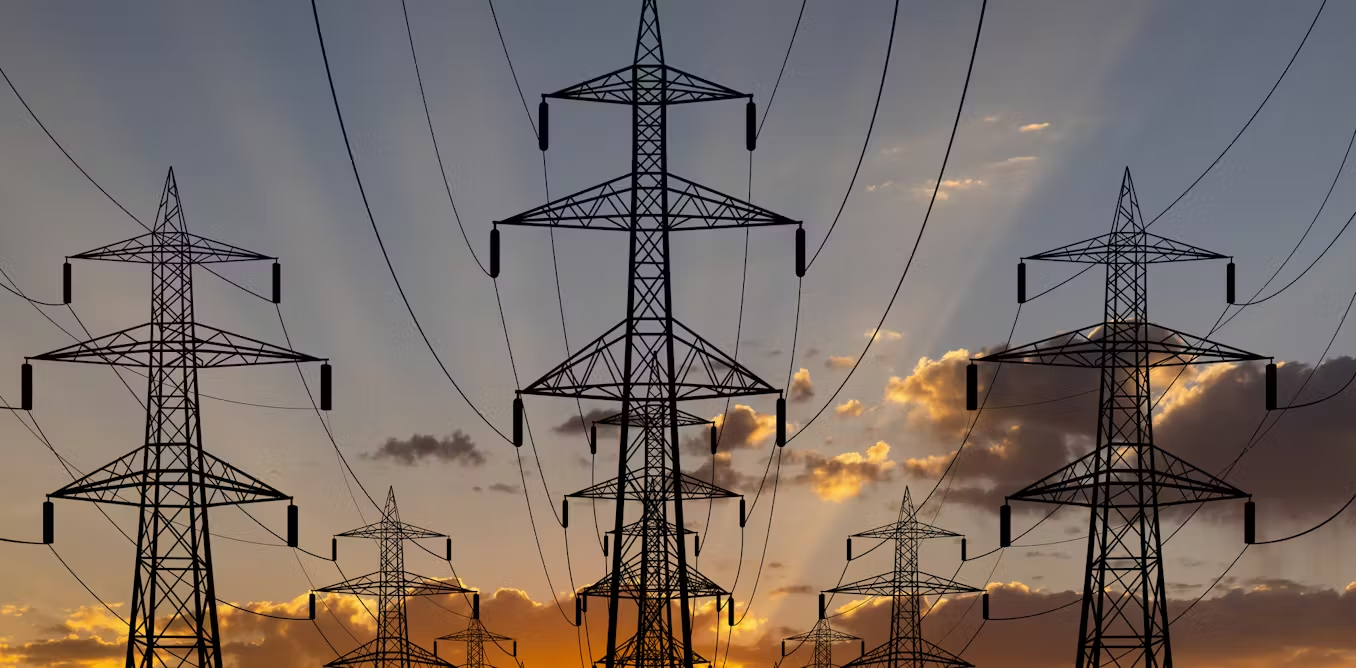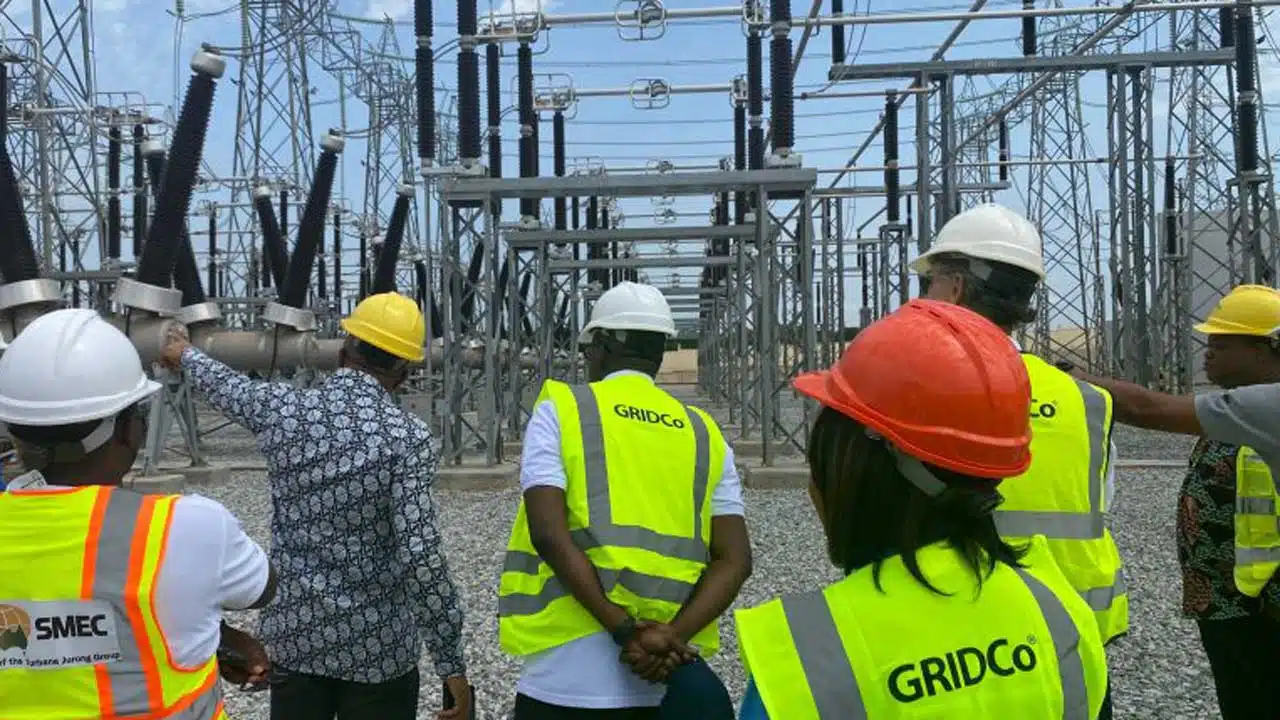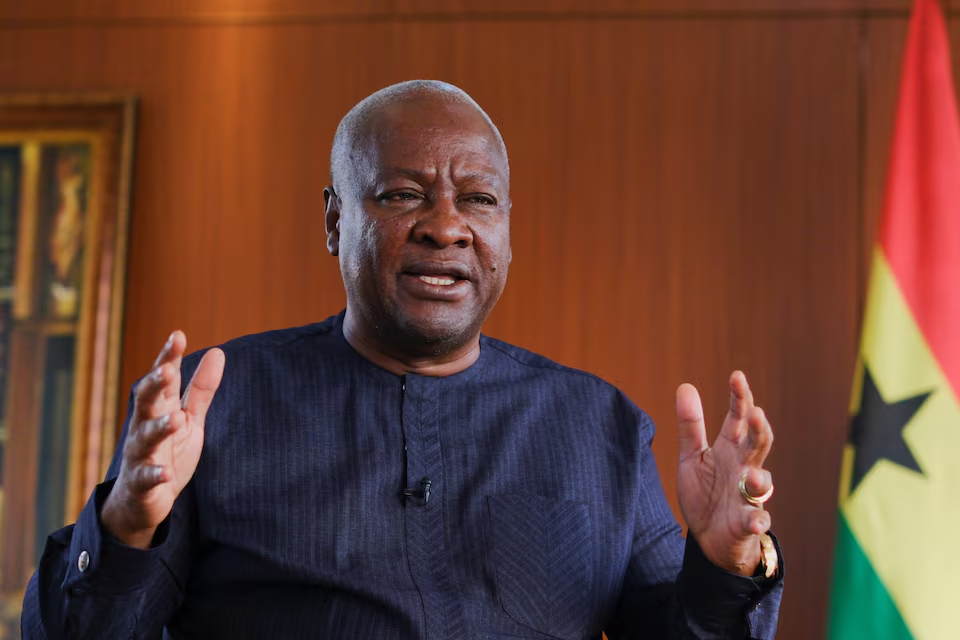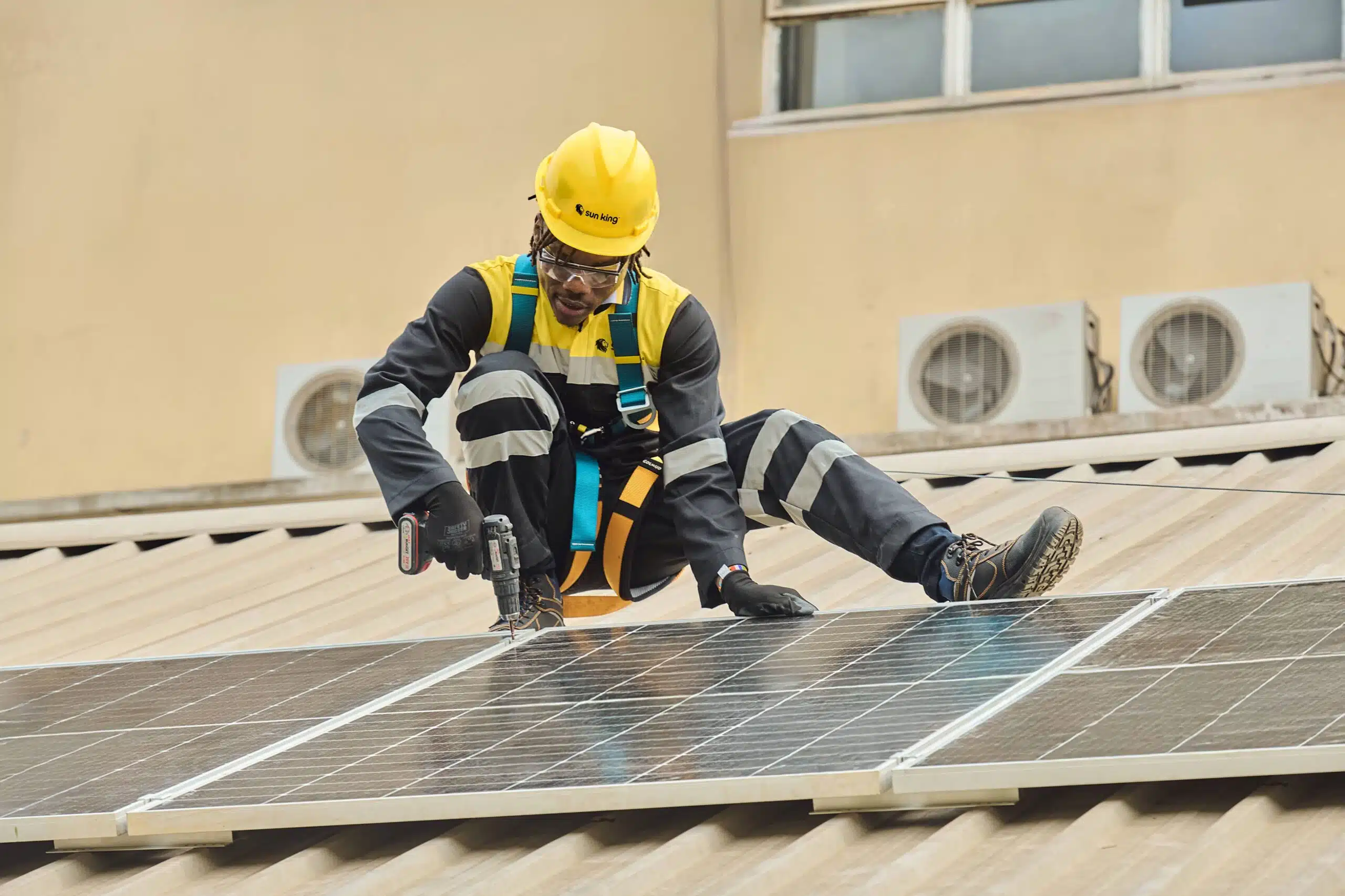For decades, Nigeria’s electricity sector has struggled to meet the needs of its people and economy.
Despite being Africa’s largest economy and most populous nation, Nigeria generates barely 4,000 megawatts (MW) of power for over 200 million people.
Frequent blackouts, high operating costs, and widespread reliance on expensive diesel generators have become the norm.
Communities suffer in silence, businesses close prematurely, and students are forced to study by candlelight. It is a crisis that touches every layer of society — from the bustling markets of Lagos to rural villages still waiting for their first lit bulb.
This chronic energy shortage stifles industrial growth, deepens poverty, and pushes millions into energy poverty.
While policy documents have come and gone, and billions have been pledged to the power sector, the lights remain off for far too many. Nigeria’s electricity story has, for too long, been one of lost potential.
But there is a lesson to be learned, and it lies across the continent in North Africa.
In less than a decade, Egypt transformed its failing power sector into one of the most robust on the continent.
From rolling blackouts and investor flight, Egypt now has a power surplus, modern infrastructure, and is exporting electricity to neighbouring countries.
This dramatic turnaround wasn’t accidental. It was the result of visionary leadership, targeted reforms, and disciplined execution.
Egypt’s model offers a roadmap for countries willing to make bold decisions, align policies with investment, and implement change with urgency.
The transformation was holistic — spanning legislation, infrastructure, finance, governance, and international cooperation.
As Nigeria seeks to reset its electricity narrative, Egypt’s journey offers not just inspiration but practical lessons.
This feature examines how Egypt fixed its power sector and what Nigeria must do to replicate that success. It draws on reforms, projects, and policies that worked — and why.
From darkness to surplus
In 2014, Egypt was facing an electricity nightmare. Daily power cuts plagued homes and businesses, disrupting lives and undercutting the economy.
Generation capacity stagnated at around 30,000 MW while demand surged.
Power plants were ageing, and the sector was crippled by fuel shortages, poor maintenance, and bloated subsidies that drained public coffers.
Public frustration grew, and investor confidence declined. The reliability of electricity became a symbol of state failure.
But Egypt’s government, under President Abdel Fattah el-Sisi, refused to let the crisis spiral further.
By treating the power crisis as a national emergency, it launched a sweeping reform and investment programme backed by political will and international partnerships.
The centerpiece was a game-changing partnership with German engineering giant Siemens.
In just under three years, Siemens and local partners built three mega gas-fired power stations at Beni Suef, New Capital, and Burullus.
These projects alone added 14.4 GW to Egypt’s grid — a capacity boost of roughly 40% delivered on a fast-track basis.
The government didn’t stop there. It passed a new Electricity Law in 2015 to liberalise the sector, allowing for competition, private sector entry, and independent regulation.
It invested heavily in renewables, creating one of Africa’s largest solar parks at Benban. The state also modernised its grid and introduced mechanisms to recover costs and improve utility efficiency.
By 2023, Egypt’s installed capacity had reached over 60 GW, serving 100% of its population with reliable electricity.
Power cuts became rare. Utilities became financially healthier. And Egypt began exporting power to Sudan, Libya, and was even preparing for links to Saudi Arabia and Europe.
This transformation was not only about hardware. It was also about leadership, institutional clarity, financing innovation, and national consensus.
Egypt’s energy reform became a pillar of its broader economic revival, and a source of national pride.
In contrast, Nigeria’s electricity sector continues to be weighed down by inconsistent policy, regulatory bottlenecks, and underwhelming execution.
The country technically has over 13,000 MW in installed capacity, but only a third is available due to fuel constraints, maintenance gaps, and grid limitations.
Transmission capacity remains fragile, distribution companies are undercapitalised, and reform efforts are often derailed by politics.
The comparison is not meant to shame, but to shine a light.
Egypt offers a living, breathing case study of what works.
And for Nigeria, the question is no longer whether it can transform its power sector, but how urgently it’s willing to act.
Will Nigeria continue to recycle failed approaches? Or will it draw the right lessons and engineer a turnaround?
Lesson one: Reform backed by political will
Egypt’s power reform success wasn’t rooted in technical brilliance alone — it began with clear political direction. President el-Sisi’s administration took ownership of the electricity crisis, elevating it to the top of the national agenda.
Ministries, regulators, and utilities were aligned on a shared vision. Reforms were not only passed but implemented, regardless of short-term political cost.
The 2015 Electricity Law was just one piece of a larger puzzle of execution.
In Nigeria, political will has been inconsistent.
Every administration has spoken about solving the electricity challenge, yet few have followed through with sustained action.
While the 2005 Electric Power Sector Reform Act introduced promising structures, follow-up was shaky. Reforms stalled, and many contracts became politicised or neglected.
The Electricity Act 2023 is a step in the right direction, empowering states and decentralising the market. But it must be backed by unwavering political resolve across party lines.
That means protecting regulators like NERC from interference, enforcing market rules, and resisting the urge to roll back progress for short-term populism.
“We tried to privatise a sector in scarcity. That was Nigeria’s mistake,” said Dr. Sam Amadi, former NERC chairman.
“Egypt built capacity and governance first.”
Nigeria must ensure that reform is not just an event but a process sustained by leadership. Without political will, even the best policy will gather dust.
Lesson two: Smart public-private models
Egypt avoided the temptation to offload its power assets entirely. Rather than rush to privatise, it used strategic partnerships to expand capacity and modernise infrastructure.
The Siemens mega-project was government-led but privately built and financed. Egypt also used feed-in tariffs and competitive tenders to attract renewable energy developers under clear and bankable terms.
This hybrid approach allowed Egypt to maintain control of national infrastructure while benefiting from international expertise and private capital.
Nigeria’s 2013 privatisation was, in contrast, abrupt.
Generation and distribution assets were sold with high expectations, but the enabling environment was not ready.
Tariffs were not cost-reflective, regulatory enforcement was weak, and the creditworthiness of key institutions was in doubt. As a result, investors struggled to deliver, and the government remained on the hook for bailouts.
The Azura-Edo IPP, backed by partial risk guarantees, stands out as a rare success. It shows that when risks are clearly defined and shared, private capital will invest.
Nigeria must embrace more flexible models — joint ventures, concessions, build-operate-transfer schemes — tailored to project needs. What matters is not who owns the assets, but who can build and operate them efficiently under transparent rules.
Lesson three: Build big, build fast
Egypt’s infrastructure push was characterised by scale, speed, and coordination.
The Siemens plants added 14.4 GW in under three years — an unprecedented feat in Africa. Projects were executed with military-style precision, supported by strong political backing and streamlined procurement.
Nigeria’s generation progress has been sluggish. Though installed capacity has grown nominally, actual available power remains largely unchanged.
Many plants, including those built under the National Integrated Power Projects (NIPPs), remain underutilised due to gas shortages, funding delays, or grid constraints.
The lesson here is urgency. Nigeria cannot afford to keep adding megawatts in piecemeal fashion.
It must fast-track flagship projects that can add significant capacity quickly — whether gas, hydro, or solar. But speed alone isn’t enough. Projects must be properly planned, fuel-secure, and integrated with transmission upgrades.
Egypt’s model shows that with political support, private collaboration, and focused execution, a nation can go from deficit to surplus.
Nigeria needs to replicate that ambition, starting with a national infrastructure dashboard that tracks, prioritises, and delivers major power projects.
Lesson four: Fix the grid, or the lights stay off
Power generation is meaningless if electricity can’t reach users. Egypt modernised its transmission and distribution networks in parallel with generation expansion, reducing losses from 25% in 2014 to about 12% by 2023.
Investments in smart grids, substations, and control systems made this possible.
Nigeria loses about 40% of generated electricity due to poor infrastructure and theft. The national grid collapses multiple times yearly.
DisCos struggle with overloaded transformers, aging lines, and collection inefficiencies.
The Siemens Presidential Power Initiative (PPI), if well-executed, could be a turning point, aiming to upgrade Nigeria’s grid capacity to 25,000 MW. But that requires accountability, technical investment, and regulatory enforcement.
Lesson Five: Harness the Sun and Wind
Egypt bet big on renewables, with solar and wind capacity growing from virtually nothing in 2013 to over 3.4 GW by 2022.
Projects like the 1.65 GW Benban Solar Park thrived due to clear policies, investor-friendly tariffs, and institutional support.
Nigeria, despite abundant solar and wind potential, has failed to deliver utility-scale renewable energy. Tariff uncertainty and regulatory delays stalled progress.
However, off-grid solar initiatives (like the Nigeria Electrification Project) have brought modest success in rural areas.
To scale up, Nigeria must establish clear feed-in tariffs, fast-track approvals, and attract blended finance.
A strong renewables roadmap, supported by development banks, could bring Nigeria closer to its clean energy potential.
Lesson six: Tariffs must reflect reality
Egypt phased out most subsidies from 2014 to 2024 through annual tariff increases, easing fiscal pressure and restoring financial viability to utilities. Lifeline tariffs protected low-income households.
Nigeria’s tariffs remain politically sensitive. While the 2020 Service-Based Tariff (SBT) model was a step forward, electricity remains underpriced for many, creating a funding gap. The resulting “cash waterfall” sees DisCos unable to pay GenCos, who in turn owe gas suppliers.
Gradual, transparent tariff reform — with public communication and performance-based billing — is essential. Investors need assurance of returns; consumers need trust that higher rates bring better service.
Lesson seven: Institutions make or break the sector
Egypt’s regulatory body (EgyptERA) maintained oversight while encouraging competition. Utilities were corporatised with clear financial accountability, and ministries worked in tandem.
Nigeria’s institutional landscape is fragmented, with overlapping agencies and political interference. NERC has strong regulations but lacks consistent enforcement. TCN remains state-run with limited reform, and NBET’s intermediary role reflects a market not yet mature.
The 2023 Electricity Act offers a fresh opportunity for institutional clarity, especially as states begin to play larger roles. But reforms must ensure coordination, reduce duplication, and prioritise performance-based governance.
A Light at the end of the tunnel
Egypt’s electricity journey shows that rapid progress is possible with the right mix of planning, political will, and smart partnerships. Nigeria is not starting from scratch: it has laws, talent, resources, and development support.
What it needs now is execution.
The lessons from Egypt are not abstract theories; they are actionable playbooks. Nigeria must follow through on its legislative reforms, scale its infrastructure ambitions, and adopt investment models that match its realities.
It must empower regulators to do their jobs, provide guarantees where necessary, and move from policy to delivery.
This will require courage.
It will demand that government officials put national interest above politics, that private sector players embrace accountability, and that Nigerians themselves demand more from those in charge.
With bold leadership and unwavering commitment, Nigeria can build the power sector its people deserve. The path Egypt took isn’t a one-size-fits-all blueprint, but it offers a compelling guide. The transformation won’t happen overnight, but with the right steps, it will happen.
By lighting up Cairo, Egypt showed what is possible. Now, it is up to Nigeria to switch on its own future.









